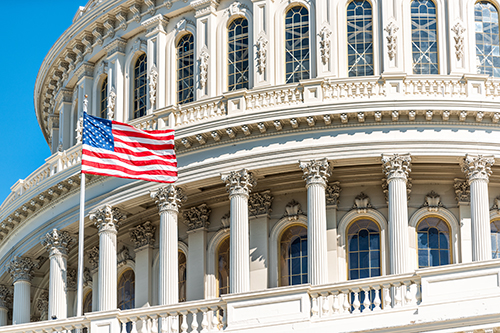The Federal Budget Made Simple
 Oh boy, it’s budget time. Media outlets, special interest groups and yes, even politicians who know better, love confusing the public about the year-end budget battles in Washington.
Oh boy, it’s budget time. Media outlets, special interest groups and yes, even politicians who know better, love confusing the public about the year-end budget battles in Washington.
Here’s a primer so you can tell the facts from fiction.
The federal budget has two parts. The day-to-day spending is called ‘discretionary’ spending, It’s the smallest portion, just one-third of the overall budget, The bulk of this $1 trillion is America’s national defense spending with the rest being border security, transportation, education and the like. This is the portion of the budget that Congress votes on each year.
The other part is huge, engulfing nearly two-thirds of the entire $4 trillion budget. It is called automatic or ‘mandatory’ spending because it’s determined by formulas and Congress doesn’t vote on it.
This includes Social Security, Medicare, Medicaid, ObamaCare, food stamps, and the interest America owes on the national debt. This is where Planned Parenthood receives its funding, through reimbursement for health care services delivered by Medicaid to the states.
* * *
Here is a key fact to know: changes in the larger portion of the budget, the automatic ‘mandatory’ spending, can’t be made in the annual budget, or in a “CR” or “omnibus.” These programs were automatically funded when they were established in law, so it requires legislation separate from the annual budget to change this automatic spending.
Even if approved by both the House and Senate, changes in automatic spending can be vetoed by the President. That’s exactly what happened early this year when President Obama vetoed the bill I helped write to defund the gruesome practices at Planned Parenthood and repeal the Affordable Care Act.
So to be clear, there are no funds for Planned Parenthood or ObamaCare in the smaller annual day-to-day spending bill Congress votes on each year at this time. Just the opposite, it includes longstanding restrictions against federal taxpayer funding of abortions.
Funding for Planned Parenthood and ObamaCare are in the larger, automatic spending part of the budget which isn’t voted on and isn’t affected even if the federal government is shut down. That’s right, those programs continue even if Congress refuses to fund the budget each year. Government shut downs have no effect on them.
If someone claims otherwise, they are either uninformed or trying to mislead.
* * *
Here is what frustrates me: By law the smaller day-to-day budget portion should be approved by Congress in 12 smaller appropriations bills. It rarely is, even though the House of Representatives debates and approves many of the 12 each year. Unfortunately, the U.S. Senate often approves none. This leaves a year-end budget battle.
A “CR” or continuing resolution temporarily extends into the new budget year the current discretionary funding exactly as it is today. That’s often bad for national defense in America’s fight against the ongoing threat of terrorism.
An ‘omnibus’ lumps all 12 spending bills together into one huge $1 trillion day-to-day spending bill. That’s too big a bill for the public to scrutinize.
Neither is the right way to go. Change is desperately needed but until America has a president who will work with Congress to approve a budget that balances over time, this is what America will be stuck with.








